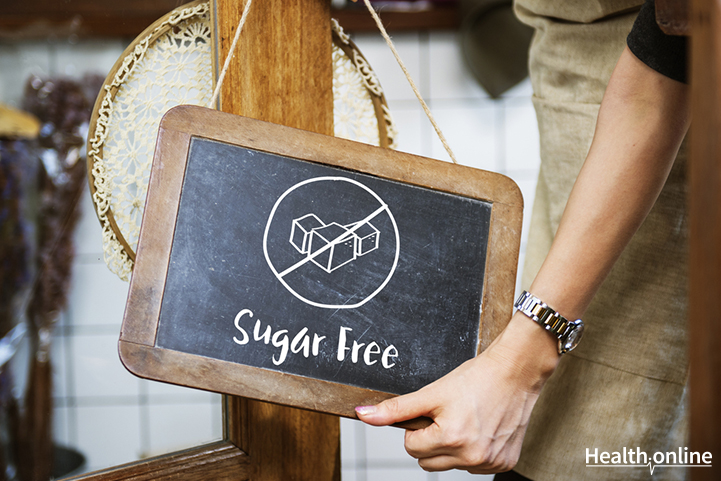
Sugar-free Diet Plan
Studies have shown several health issues are related to surplus consumption of sugar. In this regard, a sugar-free diet plan is highly recommended for all health conscious people. A sugar-free diet helps to cut down on added sugar sources like sodas, snack bars etc. It also helps to identify and exclude hidden sugar foods like cereals, packaged bread, dried fruits, sweetened yogurts, and bottled sauces to name a few.
Recommended Read: What to Eat When You’re Going Sugar-Free
Listed below are some of the primary benefits of a sugar-free diet:
- Prevents obesity
- Builds up energy
- Significantly lowers the risk of prediabetes and type 2 diabetes
- Lowers the risk of heart disease and hypertension
- Prevents fatty liver disease
- Reduces the risk of inflammatory digestive conditions
A good sugar-free diet plan works towards a low glycemic index, which, in turn, reduces the sugar cravings and controls the blood sugar levels.
Such a diet includes:
- More intake of fiber
- More inclusion of proteins
- Health fats
- Probiotics
- Fermented and other sour foods
Another important factor to get the desired sugar-free diet results is to read the ingredient labels carefully to know the amount of sugar you are consuming. Foods that may be included in a sugar-free diet plan are as follows:
Low-carb foods : These food items include grass-fed beef, lamb, free-range poultry, legumes, salmon, tuna, fermented soy products, raw cheese, and free-range eggs.
High-fiber foods : The foods that can be included in a sugar-free diet are cruciferous vegetables like broccoli, Brussels sprouts, cabbage, chia seeds, avocados, berries, fruits like apples, figs, prunes, oranges, kiwi, and melon.
Healthy fats: A sugar-free diet benefits may be reaped over a period of time with the help of healthy fats. These include coconut oil, virgin olive oil, avocado oil, nuts, milk, butter, and cream.
Sour foods: These foods also have detoxifying properties and are vital for any sugar-free diet. They are kimchi, bone broth, apple cider vinegar, miso, natty, oregano, lemon juice, ginger, garlic, and spices.
Mentioned below is a sample sugar-free diet plan:
For breakfast: Coconut milk, unsweetened oats, avocado toast, hard boiled eggs, unsweetened yogurt, sprouted grain toast, fruit puree, banana, nuts, and green smoothie
For lunch: Salads, soups, sliced chicken and avocados, turkey, hummus, brown rice, salmon, cauliflower, and other vegetables
For dinner : Quinoa, a small bowl of steak with vegetables, a piece of wild fish and vegetables, tacos, burrito, Greek yogurt, grilled chicken, and beef stew
Snacks: Healthy snacking is an integral part of a good sugar-free diet plan. It means a complete cut down on processed foods. Opt instead for fruits, nuts, sprouts etc.
Remember, the transformation into a sugar-free diet plan should be gradual and consistent. Initially, you may face issues like fatigue, cravings, brain fog and changes in appetite as well as sleep patterns. However, these issues should resolve within a week to a month. Hence when shifting to a completely sugar-free diet plan, do it in phases and not at once. But when you do it, make sure you stick to it.
Keep yourself updated with the latest on Diet and Nutrition . Like us on Facebook and follow us on Twitter for more on Health , Fitness and Health Recipes . Also, check out our Health Tools and try out our health-related Quizzes .




